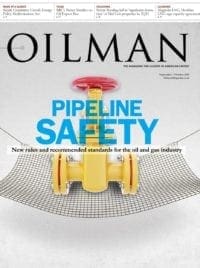The Federal Energy Regulatory Commission (FERC) in an Aug. 7 notice in the Federal Register said it plans to prepare an environmental assessment (EA) of the effects of the San Elizario Crossing Project in El Paso County, Texas.
FERC will use the EA to determine whether the project is in the public interest. Energy Transfer Partners subsidiary Comanche Trail Pipeline in May submitted an application to FERC seeking authority to build and operate a new border crossing at the international boundary between the U.S. and Mexico in El Paso County. As part of its application, the company also requested that FERC issue a presidential permit for the facilities. The San Elizario Crossing Project would include the construction of approximately 1,086 feet of 42-inch-diameter pipeline, installed using a horizontal directional drill beneath the Rio Grande River near the City of San Elizario, Texas.
According to FERC’s notice, the new pipeline would have a maximum design export capacity of approximately 1.1 billion cubic feet per day in order to transport natural gas to a new delivery interconnect near the City of San Isidro, in the State of Chihuahua, Mexico.
Comanch Trail Pipeline estimated in its application that the San Elizario crossing project will cost about $2.5 million.
The San Elizario crossing project also has associated facilities that would be constructed in support of the project, but do not fall under the jurisdiction of FERC. The proposed Comanche Trail intrastate pipeline facilities consist of 196 miles of new 42-inch-diameter pipeline, multiple receipt and delivery metering stations, and other auxiliary facilities extending from Pecos County, Texas, to the proposed cross-border facilities. The intrastate facilities are subject to the jurisdiction of the Texas Railroad Commission.
Comanche Trail Pipeline requested in its application that FERC grant both the authority to construct the project and the presidential permit by Nov. 1 so that the company can begin construction in 1Q16.




